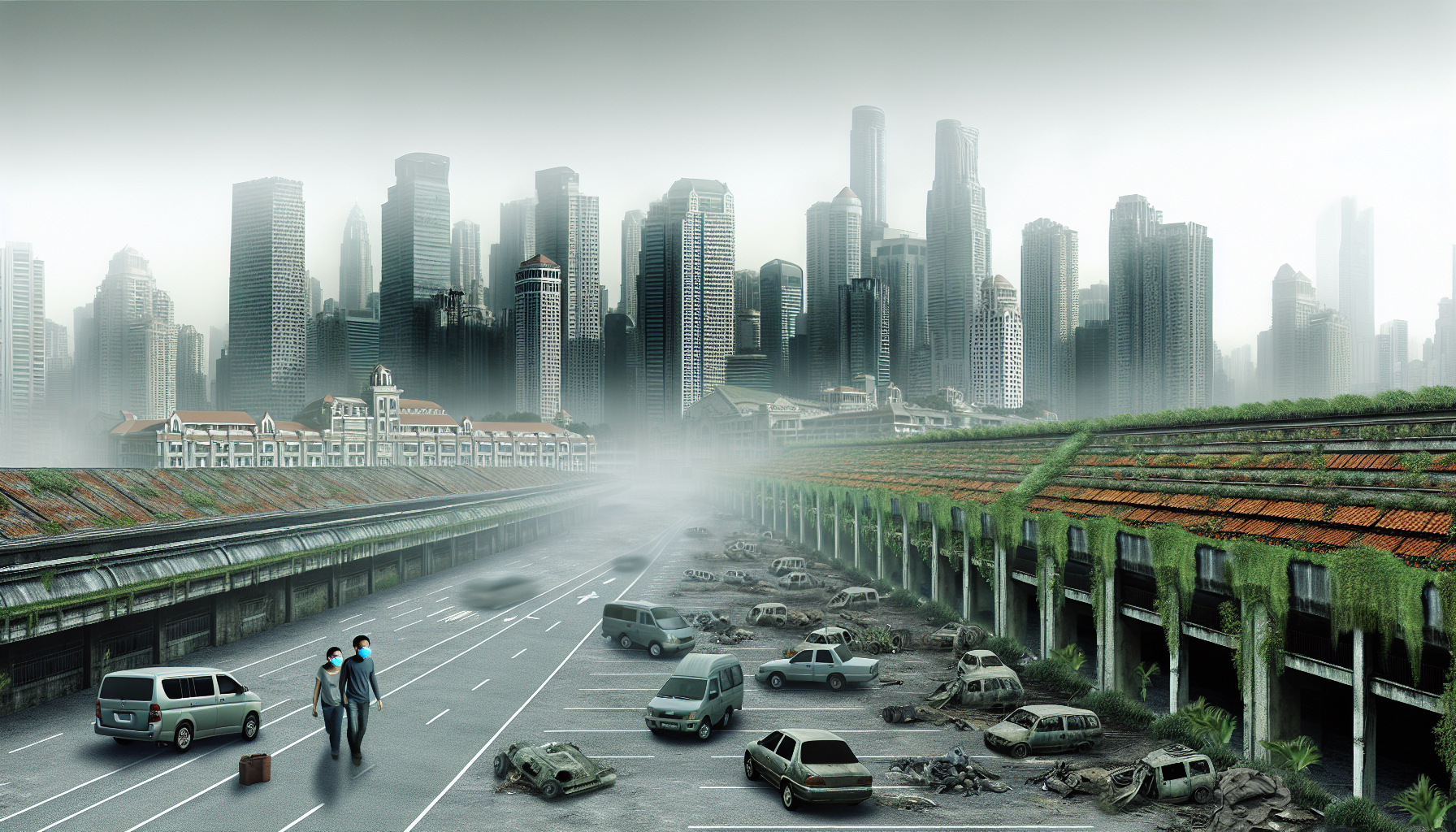Peering out from the 40th floor of what was once considered an architectural marvel, the view is nothing short of an ironic masterpiece. The skyline, once a proud silhouette against the dusk, now lies swallowed – not by the night – but by a thick, choking shroud that the sun itself seems to recoil from. Under the Smog – A Skyline’s Final Elegy, could almost be the solemn title of a dystopian novel, but regrettably, this is the lament of our present reality.
We stand as the reluctant spectators to a reluctant transformation of our cities; the skyscrapers that were the stalwarts of our industrial triumph are mere specters in a gloomy vista. The air is dense, filled with the noxious byproducts of decades of environmental negligence. What was the city that never sleeps, has been sedated into a slumber by a lullaby of emissions and inefficiency.
In this landscape, children no longer parse constellations or wish upon falling stars. Instead, their eyes sting and water as if the sky itself were grieving. The panorama is grim: vehicles lie abandoned as relics of a more mobile era, bicycles have become the steeds of the brave, and the face mask has evolved into a necessary extension of our very skin.
What are the inhabitants of this dystopian panorama to do when the very air they breathe is a luxury taxed by the environment? Stories surface of rooftop gardens where denizens attempt to reclaim lost greenery, of purifiers that work tirelessly to provide a gulp of clean air, but these are but bandages on a gaping wound. The bustling lifeblood of the city’s veins – its public spaces and thoroughfares – are deserted, becoming the haunting grounds of vermin and overgrowth.
The Final Elegy of our skyline is not just in its obscured beauty, but in the life it represented. Where once light shone from every window and the hum of the human spirit was audible, now silence and darkness hold court. The towers stand not as monuments to progress but as tombstones, marking the death of an era where humanity flourished in its concrete jungles.
As night falls, one may still discern the faintest flickers of light – not of stars, but of candles, as the citizens hold vigil for the world that was. Tales are whispered of distant places where the sky is still a canvas of celestial wonder, where the horizon kisses the sea instead of suffocating under human-made clouds. It’s a tale not of hope, but a forlorn dream clinging on in the imaginations of those shackled to this grey reality.
But this melancholic state is no accident; it stands as a cautionary testament to the consequences of unbridled progress without pause for Ecosystem. It tells of a past too stubborn to change until change was no longer a choice.
The question that now seeps into the collective consciousness is whether the smog is indeed the final curtain, or if it is the stage setting for a grand, albeit drastic, awakening. While the outlook is bleak, the human spirit endures in its most hardened form – adapting, surviving, and perhaps, whispering revolutions in the dark.
So, we end with a thought, not of this night, but of nights to come: when the stories our descendants tell may not just be of the smog and the shadowed spires, but of how humanity once again found harmony with the world that bears it. Perhaps then, this Elegy will not be the last song to fly from the lips of a forgotten skyline, but the prelude to a symphony composed in respect of, rather than in spite of, Nature.
